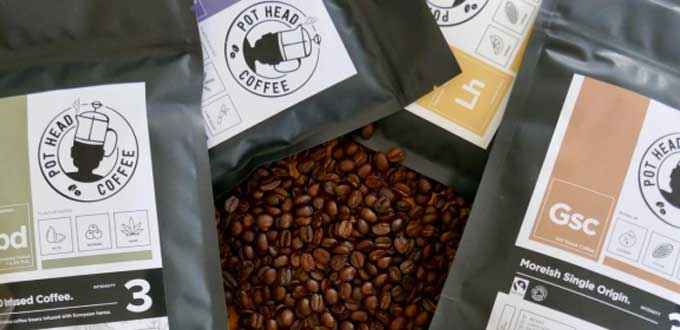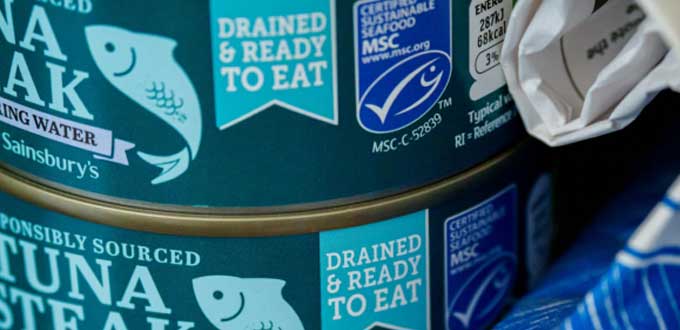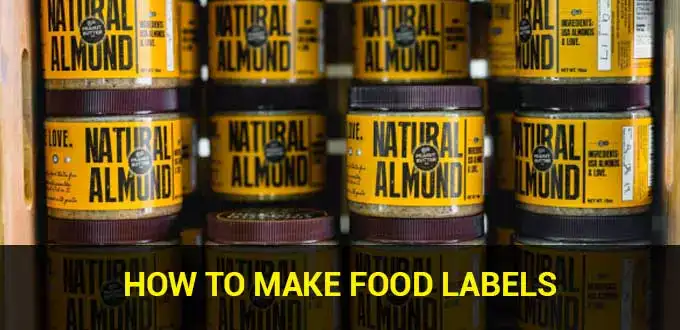
Creating food labels is important besides product quality; consumers are usually interested in the packaging and labels attached.em
It seems the phrase “Don’t Judge a Book by Its Cover” does not apply to food products. Admit it or not, people will be more attracted to products with suitable labels and aesthetics than those made carelessly. Although possible, the taste of food with a potluck label is much better.
In addition, labels can also increase the selling value of the product. As a small example, fried onion products with plastic-wrapped paper labels that we usually see at vegetable vendors are sold for Rp. 2,000.
On the other hand, similar products with mini jar packaging and beautiful labels can sell better even though they are sold for Rp. 7,000.
This shows that labels are essential in product marketing strategies, especially food products.
This is why before launching their products, instant or snack food companies usually do market segmentation and research first.
The main goal, of course, is to create attractive labels so that potential consumers are interested in their products.
For small businesses, don’t worry. We can also feel the same thing as long as you want to be a little creative in making attractive food labels.
How to Make Food Labels
Here are some tips and tricks for creating attractive food labels from various sources for reference:
1. Label Color
Did you know that colors have psychological effects? This is an open secret. This is the reason some products tend to have distinctive colors.
Like the blue color, which is identical to the bank because the blue color has a strong, trusted, and sturdy effect. The hope is that customers can entrust their money to institutions that are considered solid.
Regarding food, two colors are suitable to be used as a component in food labels, namely red and yellow. These two colors are considered to arouse appetite and make people interested because they are pretty striking.
So, if you want to create an attractive label, don’t hesitate to use red and yellow elements. Combine these colors with other elements so that there is an exact value that makes people always remember your product.
Several food companies have proved the effectiveness of the use of red and yellow.
Look at the labels on popular fast food products such as KFC, McDonald’s, Wendy’s, or Pizza. We will find elements of red and yellow on food labels, and as we know, these products are proving to be popular and in demand by many people.
2. Font Type

Instead, avoid choosing unique and funny letters just because they look more aesthetic in making food labels, the more precise the notes, the better.
Unique letters that are difficult to read make buyers reluctant to take the product if installed on the food shelf of a supermarket.
3. Font Size
The same applies to font size. When choosing food, consumers tend to scan. So, labels with clear writing and the right size are certainly more attractive than labels with small letters.
Ideally, the letters on food labels are neither too big nor too small.
If it is too large, it is feared that the label will not contain information about food composition, licensing, halal brand, and information that the product has passed BPOM.
Make the font size appropriate, in harmony with other elements, and easily read by consumers.
4. Product Name

Because it serves as the primary information, we recommend that the name be made more significant than other information.
The placement of this name should also be in a strategic place, such as the center of the label. Because this element is so important, you should make an attractive and unique design so that the name tag looks more beautiful than other products.
5. Use the Right Material
In addition to the components already mentioned, use quality labeling materials to read the information listed. Ideally, the label used is made of plastic or paper that has a plastic coating. Besides being easy to find, this material is proven to be waterproof and oil-resistant.
If the labels are made of this material, you also don’t have to worry about the writing and images fading quickly. This is because the material is known to be more durable than other materials such as paper.
6. Add Interesting Images

So that the effect can be maximized, make sure the image has a strong enough appeal and has a unique value.
For the right results, you should use the services of a graphic designer in making the image.
In addition to adapting to product characteristics, designers can also help us create unique images that make labels look different even though they are side by side with other foods on the food shelf.
7. Determine the Right Size
Finally, make sure the labels are the right size and shape. This is why before making a label, first determine the size of the packaging that will be used.
If you have found the proper packaging, make a label that is neither too small nor too big.
Adjust the size of the label to the packaging without neglecting the aesthetic element.
The reason is, it’s useless to make an attractive label, but it doesn’t fit the size of the product packaging. Instead of looking beautiful, the food sold actually looks like a random product.
These are tips and tricks for creating attractive food labels. For sales figures to increase and make it easier for us to record every existing stock, use the iREAP POS application.
Besides being easy to use, this application can be run online and offline, so you can monitor sales anytime and anywhere.
It may be helpful.



